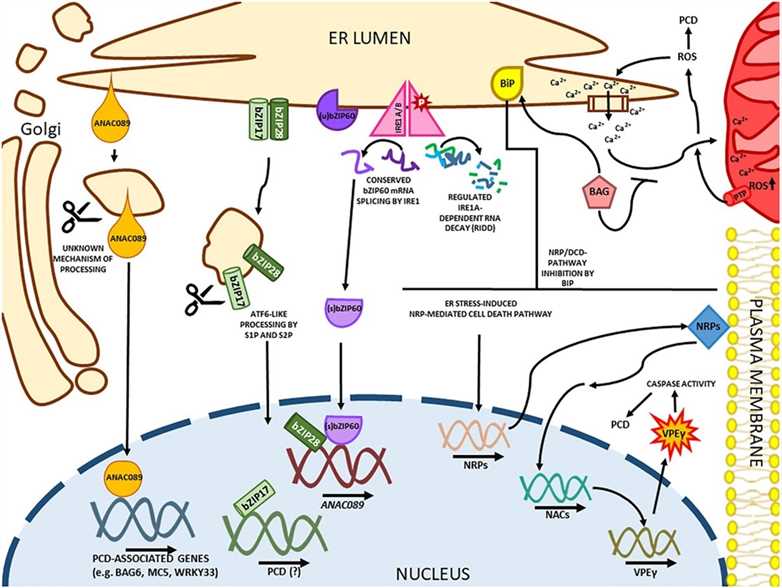Mechanism Analysis of Apoptosis by Plant Endoplasmic Reticulum
The endoplasmic reticulum (ER) stress response is triggered by any condition which disrupts protein folding and promotes the accumulation of unfolded proteins in the organelle lumen. In plant cells, the evolutionarily conserved unfolded protein response is activated to clear unfolded proteins and restore ER homeostasis. However, if ER stress persists and cannot be reversed, prolonged stress can lead to cellular dysfunction that activates cell death signals. ER stress-induced cell death signaling is an important contributor to plant stress adaptation.
Lifeasible, as a leading global company, is committed to helping our customers achieve effective and successful research. We provide a mechanism analysis of programmed cell death induced by plant endoplasmic reticulum. We always deliver reliable results and reports on time to our customers worldwide.
ER Stress-Induced Cell Death in Plants
- Severe and sustained ER stress endangers cellular stability due to excessive unfolded protein or Ca2+ imbalance. Therefore, programmed cell death (PCD) is activated to maintain the integrity of the whole plant system. In addition to their roles in ER homeostasis restoration, ER sensors IRE1, ATF6, and PERK activate PCD in critical situations.
- Lifeasible provides mechanism analysis of ER stress-induced cell death in plants, including ER sensors IRE1, ATF6, and PERK. IRE1 shows regulated IRE1-dependent RNA decay (RIDD) degradation activity on another ribosome-associated mRNA in the ER to promote cell death. Under constant stress, ATF6 upregulates PCD genes, including the pro-death bZIP transcription factor CHOP.
ER Stress-Induced Plant-Specific Cell Death
- As plant-specific trans-activator factors, NACs are involved in the plant-specific mechanism of ER stress-induced cell death response, usually associated with prolonged ER stress conditions.
- We provide analysis of the NAC module of transducers and other cell death regulators, such as the DCD / NRP-NAC-VPE (vacuolar processing enzyme) cell death signaling circuit, the bZIP-NAC cell death signaling module, and the ER–mitochondria crosstalk mediated by NAC.
 Fig.1 ER stress-induced cell death in plants. (Simoni EB, et al., 2022)
Fig.1 ER stress-induced cell death in plants. (Simoni EB, et al., 2022)
ER Stress-Induced PCD in Plant Immunity
- ER function is related to plant innate immunity at multiple levels. ER plays an important role in processing antimicrobial proteins, which are delivered to the site of a microbial attack by the secretory pathway via vesicle-mediated transport.
- We provide a functional analysis of the unfolded protein response branches IRE1 / bZIP60, the ER quality control system, et al., which play an important role in turnips mosaic virus (TuMV; genus Potyvirus) and plantain Asiatica mosaic virus (PlAMV; Potexvirus) infection by inducing programmed cell death.
Lifeasible is always devoted to providing high-quality and satisfactory service to our customers. If you are interested in our services or have any questions, please feel free to contact us or make an online inquiry.
Reference
- Simoni EB, et al. (2022). "Cell Death Signaling From Endoplasmic Reticulum Stress: Plant-Specific and Conserved Features." Front Plant Sci. 13, 835738.
For research or industrial raw materials, not for personal medical use!
 Fig.1 ER stress-induced cell death in plants. (Simoni EB, et al., 2022)
Fig.1 ER stress-induced cell death in plants. (Simoni EB, et al., 2022)